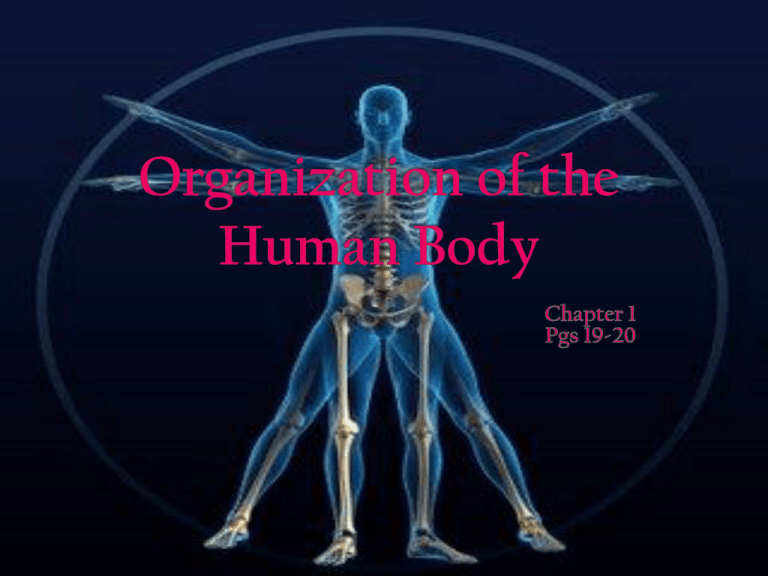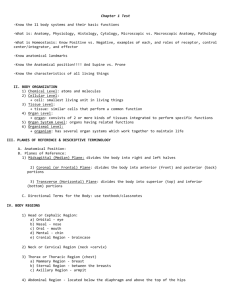Organization of the Body - Mrs. Sanborn's Science Class
advertisement

Axial Head Neck Trunk/Torso › Thorax :upper portion (superior) › Abdomen: midportion › Pelvis: lower portion (inferior) Appendicular Pectoral girdle & upper limbs Pelvic girdle & lower limbs Spaces within the body which house the internal organs (viscera). Consists of two main cavities: 1. Dorsal cavity-the cavity along the back, posterior side of the body 2. Ventral cavity-the cavity along the front, anterior side of the body Two major cavities within the axial portion: Dorsal Cavity Ventral Cavity Towards Back Towards Front Cranial cavity (head) Spinal/vertebral cavity (neck, thorax, abdomen) Orbital cavities (head) Nasal cavities (head) Oral cavities (head) Otic Cavities (head) Thoracic cavity (thorax) › Pericardial cavity › Pleural cavities Abdominopelvic cavity (abdomen & pelvis) › Abdominal cavity › Pelvic cavity Sheets of tissue that serve to protect body structures. Serous Membranes › Double layered sheets of connective tissue separated by a small amount of fluid 1. Parietal layer-outer layer, forms the outer boundary of the cavity 2. Visceral layer-inner layer, sits directly on the organ it covers › Serous fluid-secreted from the membrane to separate the parietal & visceral layers. Peritoneal Membranes Covers the stomach, liver, spleen, gallbladder, small & large intestine in the abdominal cavity. Covers the distal end of the large intestine, bladder & internal reproductive organs in the pelvic cavity. Body Systems consist of a collection of organs that work together to perform a specific task or function. Cardiovascular Digestive Endocrine Integumentary Lymphatic Muscular Nervous Reproductive Respiratory Skeletal Urinary






